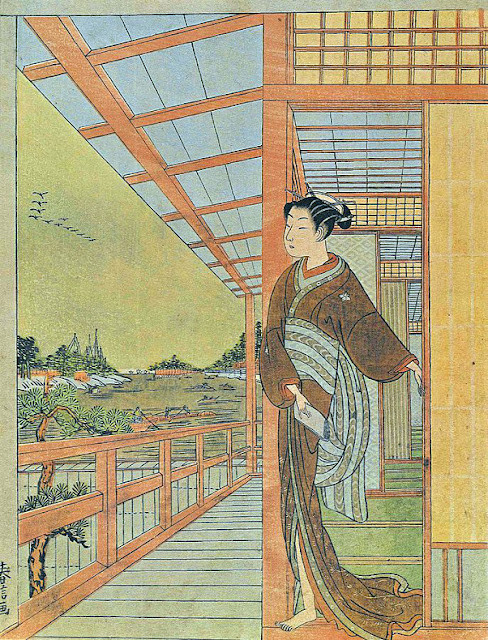 |
| Gakutei: Moonlit Night at Suehiro Bridge |
Yashima Gakutei (1786–1868) studied under both Hokusai and Totoya Hokkei. He was a poet as well as an artist.
His prints are technically advanced, although he made mainly surimono and book illustrations. His landscapes and seascapes are of a very high quality.
This week's picture is "Moonlit Night at Suehiro Bridge", in the series: Famous Places of Naniwa (Osaka), Views of Tempozan at a Glance (Tempozan Suehiro Bashi - Tsukiyo no Zu) from the 1830s (probably 1834). The style is noticeably influenced by Hokusai.
This was the northern entry into the system of channels covering the land of Tempozan, in Osaka.





